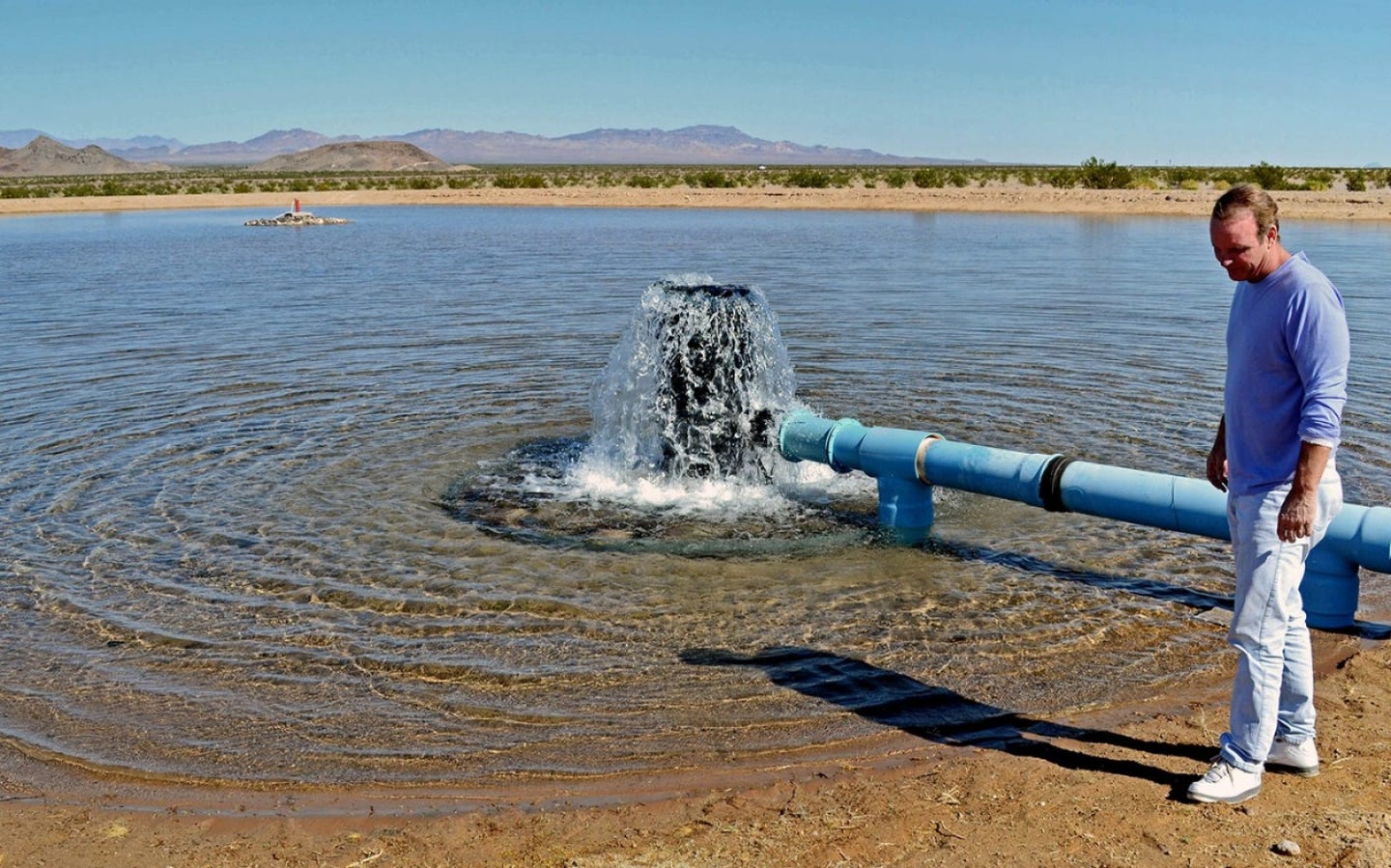Global Groundwater Depletion: An Alarming Reality and Hopeful Solutions
The study of nearly 1,700 aquifers offers valuable insights into the state of global groundwater, its depletion, and potential solutions

Groundwater, the hidden lifeblood beneath our feet, is disappearing at an alarming rate across the world. (CREDIT: SCIENCENOAKI SCHWARTZ / AP)
Groundwater, the hidden lifeblood beneath our feet, is disappearing at an alarming rate across the world. This pressing issue, backed by a comprehensive study published in the journal Nature, conducted by researchers from UC Santa Barbara, highlights the urgent need for action.
The study, spanning nearly 1,700 aquifers, offers valuable insights into the state of global groundwater, its depletion, and potential solutions. It's a wake-up call for scientists, policymakers, and resource managers worldwide.
Lead author Debra Perrone, an associate professor in UC Santa Barbara's Environmental Studies Program, emphasized the curiosity-driven motivation behind the study: "We wanted to better understand the state of global groundwater by wrangling millions of groundwater level measurements."
To achieve this, the team compiled data from national and subnational records and other agencies, taking three years, with two dedicated to cleaning and sorting data. This effort involved analyzing 300 million water level measurements from 1.5 million wells spanning the past century.
Related Stories
Translating this immense dataset into meaningful insights about global groundwater trends was the next challenge. The researchers meticulously scoured over 1,200 publications to reconstruct aquifer boundaries and evaluate groundwater levels in 1,693 aquifers, producing the most comprehensive analysis to date.
The findings paint a concerning picture, with groundwater declining in 71% of the studied aquifers. What's even more alarming is that this depletion is accelerating in many areas, particularly in arid and semi-arid regions under cultivation. Scott Jasechko, co-lead author, noted the intuitive nature of this finding but emphasized the importance of real-world data supporting it.
However, there are glimmers of hope, with 16% of aquifer systems showing stabilized or recovered groundwater levels. Jasechko pointed out that this study demonstrates that humans can reverse the trend with deliberate efforts, citing Tucson, Arizona, where water from the Colorado River is used to replenish aquifers, serving as a successful example.
This paper provides the most comprehensive account yet of trends in groundwater levels around the world. Darker colors indicate changes of 10 cm/year or more. (CREDIT: Jasechko et al.)
One key takeaway is the potential of groundwater recharge. Storing water underground is not only cost-effective but also less disruptive and safer than building above-ground infrastructure. Tucson's groundwater recharge project, for instance, stores water efficiently while benefiting the local ecology.
Another approach to addressing groundwater depletion involves regulating demand through policies, permits, and fees. Perrone is currently studying water law in the western U.S. to understand these interventions better, highlighting that aquifer recovery often necessitates intervention, regardless of whether it focuses on supply or demand.
Twenty-first century groundwater-level trends in globally distributed monitoring wells. (CREDIT: Nature / Jasechko et al.)
To complement measurements from monitoring wells, the study utilized data from the Gravity Recovery and Climate Experiment (GRACE), which precisely measures Earth's gravity, offering insights into aquifer dynamics at large scales. This allowed them to explore groundwater conditions in areas without in-situ data.
Yet, groundwater level trends only tell part of the story. Even stable aquifers can affect nearby surface water and streams when groundwater is withdrawn, causing them to seep into the subsurface. Additionally, the study analyzed precipitation variability over four decades, finding that areas experiencing accelerating groundwater declines often correlate with increasing aridity, reducing recharge and increasing demand.
Twenty-first century trends in depth to groundwater in 1,693 globally distributed aquifer systems. (CREDIT: Nature / Jasechko et al.)
This study complements a previous work by Perrone and Jasechko, representing the largest assessment of global groundwater wells. By combining data from monitoring and groundwater wells, they gain a comprehensive understanding of which wells are at risk of running dry.
Looking ahead, Perrone and Jasechko are delving into the impact of climate change on groundwater levels. Connecting these changes with well depths will provide better predictions for assessing groundwater access risks.
Groundwater depletion is a challenge we must confront head-on, with the hope that with concerted efforts, we can reverse the trend and secure this vital resource for future generations.
For more green news stories check out our Green Impact section at The Brighter Side of News.
Note: Materials provided above by The Brighter Side of News. Content may be edited for style and length.
Like these kind of feel good stories? Get the Brighter Side of News' newsletter.



